
Bavaria Continues Agricultural Traditions
By William Krakow
Bavaria has all the reason and means to abandon tradition, and yet tradition persists, fending off gentrification and 21st-century luxury.
Though long scorned by the rest of Germany as conservative, eccentric hillbillies (not unlike rednecks or Texans in the United States), Bavarians have built an economic stronghold in their region over the past 50 or so years.

During the post-WW-II Allied occupation, many companies, such as Siemens and BMW, flocked to the Bavarian capital of Munich to escape political turmoil in Berlin and other major manufacturing hubs.
With an annual GDP of over €500 billion, only 20 nations in the world have a larger economy.
Yet despite the flourishing, modern economy in Bavaria, there has been little to no abandonment of the forbearing agrarian culture.
Old Bavaria

In medieval towns with cobbled streets, glossy new Audis park beneath tattered outbuildings, right next to rusted but functional combines and wooden pull carts.
Quaint village centers now feature high-end outdoorsy outfitters alongside family-run shops, many established in the 19th century, boasting vintage dirndls and sheepskin boots.
Middle-aged businessmen in lederhosen stroll the ancient (yet pothole-less) streets, thumbing through Twitter as they make their way to the local Biergarten.
Alpine Farmers
As their countrymen in Munich frolic during Oktoberfest, Alpine farmers 60 kilometers to the south are getting ready for a more imperative, yet no less boisterous task known as the
After a summer spent grazing the high, steep meadows tucked between rocky peaks, herds of cattle are plump and ready to make their way down the mountain and rest in the shelter of ancient but sturdy barns.
The timing of this sojourn is crucial – too early, and the cattle will devour the farmers’ food stores before winter’s end; too late, and early fall snow can block the road down, trapping herds a kilometer above sea level as temperatures drop and alpine grass dwindles. For the cows, it is a matter of life or death; for the farmers, that of profit or economic and emotional catastrophe.
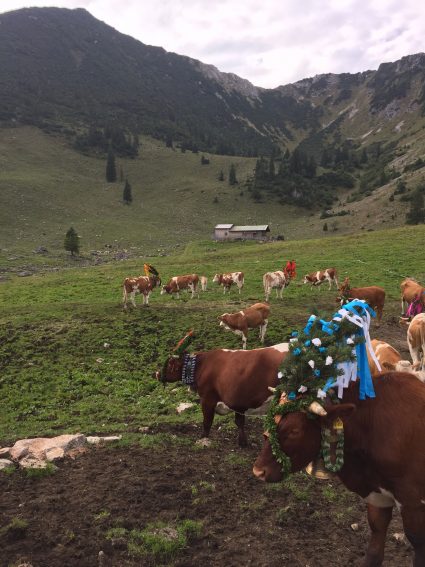
I almost slept through the Viehscheid. I had spent the previous day on a 15-mile trek around Innsbruck, and my quads and calves were begging for a day to peruse the options on German Netflix from the comfort of my bed.
But Katie — my sister — woke me up at 6 am to get ready. Fortunately, she told me that we were to be driven up the mountain.
“Then we’ll just walk down with the cows, and stop at the Gasthof for brunch.”
It was enough to get me out of bed. I could handle a walk down a mountain. Also, the thought of my older sister doing anything more adventurous than me was too much to bear.
I got dressed and headed downstairs. Katie and Leo – her German fiancee and my host for the week – were all ready to go.
“Are you sure you want to wear those?” Leo asked, pointing to my feet.
“Umm, yeah, I think I’ll be alright.” I was wearing my rugged, worn but reliable trail runners, a pair of shoes that had carried me up dozens of Alps and through four feet of snow to the highest point in Colorado.
Leo still seemed unconvinced. He and Katie were lacing up heavy-duty work boots.
“Okay… but watch where you step, yah?”
This was my first hint that we were in for more than a casual morning stroll
To the Cow-Herding Spot
We hopped in Leo’s car and drove just a mile down the road, stopping at the farm that would serve as our cow-herding destination. Leo chatted animatedly with the farmers, many whom he had grown up with, and Katie nodded and laughed along while I smiled politely and tried to work out the knots in my legs.
We ate a few slices of cake – next to beer, every German’s favorite indulgence – and then piled into cars and set off on a dusty, gravel road.
Well, road is a generous term. This was more of a wide hiking trail, winding its way up into the forest at an impossible gradient. Finally, just when I thought there was no way our tired Honda could take any more punishment, we emerged into a bright, bowl-shaped meadow.

A single wooden shack – no larger than a doublewide trailer – was the only building in sight.
“Auf gehts!” Leo shouted, and we all tumbled out into the crisp alpine morning.
The First Step
The first step of the Viehschied took almost no effort on my part. The cows know that they are coming down the mountain that day, and as we made our way to the shack they followed suit, gathering in front of the door and jostling for position.

But these were nothing like the cows I knew from back home – those docile, black-and-white gluttons that pepper the fields around my grandparents’ farm.
These were huge, rust-colored beasts, boasting eight-inch horns that tapered to a sinister point. Seemingly indifferent to those skewers as they clashed at eye-goring level, a farmer stepped between the cows and let them into the building. Once the last calf was inside two more men in lederhosen followed, and they closed the door to begin health checkups on the herd. The rest of us sat down at picnic tables outside.
“Here,” Leo said, holding out a beer, “for courage.”
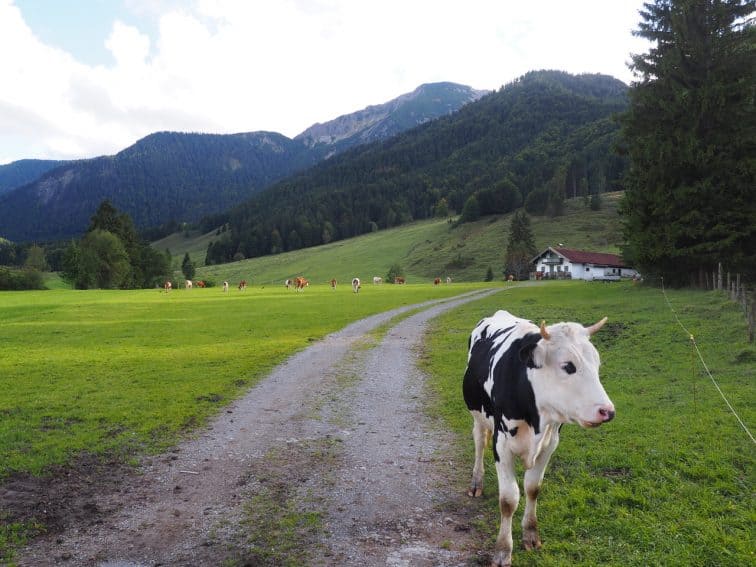
I laughed and turned to take it. But when I looked at him, Leo wasn’t laughing. I also noticed that his own beer was already 3/4 gone.
About 15 minutes later, as I was starting to get sleepy from the alcohol, the door of the barn reopened.
There was a shout – some German phrase I didn’t recognize, but with an intonation comparable to “Heads up!” – and out stormed one of the largest bulls, wearing a crown of pink and purple roses looped over its horns and snout.
I was later told that this is an “honor” for the animals, representing a successful and healthy summer. The bull was therefore incredibly ungrateful, tossing his pronged head about in an attempt to be free from such a humiliating embellishment.
Don’t Let Them Escape!
“Okay, Vill,” one of the farmers said (my name doesn’t translate well), “you stand by the gate and make sure they don’t escape.” He handed me a long stick. “Use this.”
I spent the next hour corralling thirty angry, testosterone-fueled bulls – adorned unwillingly with floral tiaras – using nothing but a 4-foot hiking pole and my own surges of adrenaline.
Finally, the farmers released the last cow into the pasture and closed the gate. We were ready to make our way down the mountain. On the other side of the enclosure, the cows were likewise all set to go.
My instructions for the migration remained the same: don’t let them get away, use this twig to direct those 4,000-pound beasts. If I thought it would be any easier from this point forward, I was clearly mistaken.
It was chaos. As soon as the gate was opened, the cows began plodding down the steep switchbacks, eager to graze in fresh valley fields. But cows, it so happens, are severely prone to ADHD. The slightest turn of a head, or a single misstep by their neighbor, is enough to send a cow scampering off into the woods.
And when one cow leaves the trail, they all want to. Within minutes, I was sprinting down the side of the mountain after a trio of delinquent heifers, while Katie and Leo were likewise occupied pursuing a stray calf running back up to the pasture.
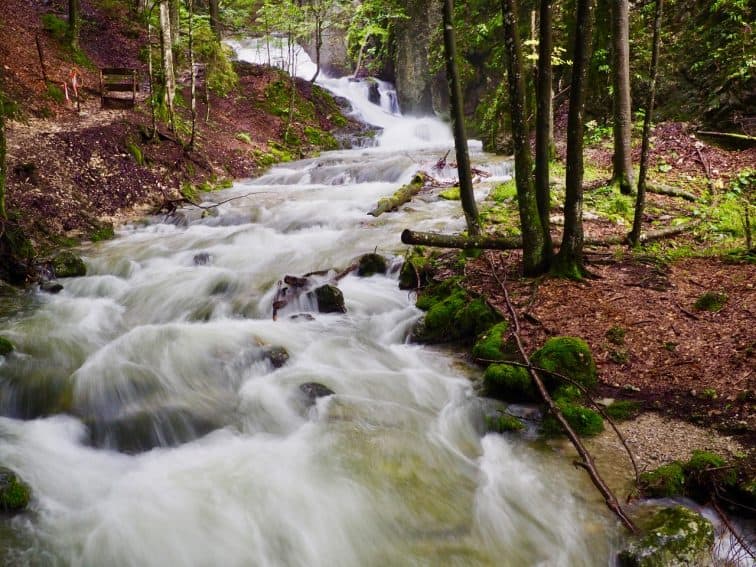
Even when we managed to round up all the wandering cattle into a cohesive unit, the parade down the road was hardly more enjoyable. As it turns out, cows lack control over their sphincters. Thus, without warning or change in gait – and with impressive frequency – they are liable to release a viscous, emetic liquid from betwixt their hindquarters.
To avoid further vulgarity, I’ll just say that that was the last time I wore those running shoes.
Finally, the herd found its rhythm and began to cooperate, plodding down the mountain two-by-two at a substantial pace. I began to trot, then jog, and then run down the mountain behind them. The farmers happily pranced along in their lederhosen, either accustomed or immune to the chafing of their inner thighs. After a minute, one of them turned to me:
“The goat!” He exclaimed, whirling around and jogging backward with practiced ease, “can you get him?”
I glanced over my shoulder and noticed a tired-looking goat that had drifted behind the accelerating herd.
“Jah!” I said with false conviction, giving him a thumbs up just in case. He returned the gesture and flipped back around while I stopped and waited for my charge. But as soon as the cows disappeared around the next bend, the goat stopped in its tracks.
“Come on!” I said, “Let’s go! Follow the cows! Come on!” But the goat didn’t budge.
Stupid me, I thought, it’s a German goat.
“Uhhh, auf gehts! Err, los gehts? Komm! Komm!” The goat still didn’t budge, but I did get the feeling he understood what I wanted, which was only more infuriating.
I tried everything. I pushed it from behind, pulled on its collar, even tried to lift its surprisingly dense body, but to no avail.
Finally, I decided to feign apathy and proceed down the road, hoping the goat would get bored and follow. I walked about 10 meters before looking back to see if my plan had worked.
Much to my dismay, that fiend was loping away back up the mountain. I swear he even looked over his shoulder and smirked. I cursed – in German, of course, hoping the goat heard it – and sprinted after him, grabbing hold of his collar just before my legs gave out.
So this is my life now.
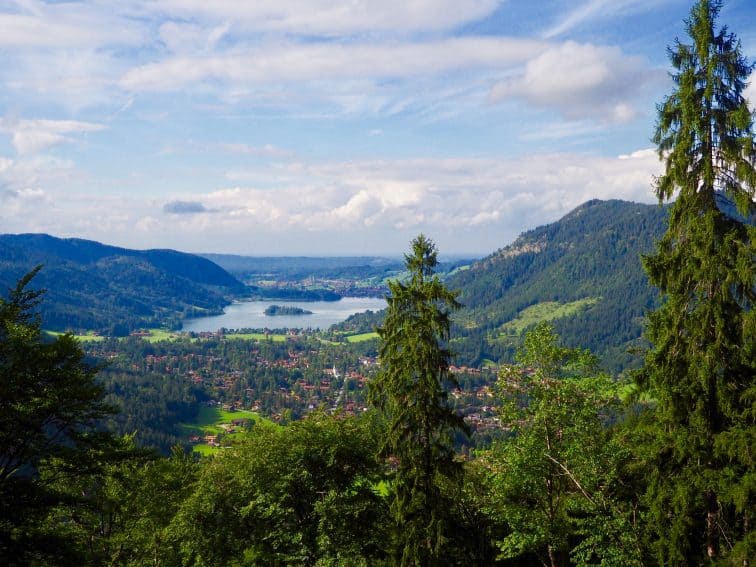
I imagined returning to the States in a few weeks, and how I would describe this trip.
“So how was Germany, Will?” I parodied to no one in particular, as only the goat was in earshot.
“Just swell,” I answered myself, “I was covered in feces and nearly gored by a bull wearing a tiara. Oh, and I chased a stubborn goat up a goddamn mountain. A real enlightening experience.”
Hilarious to the Farmers
In the end, one of the cars that had brought us up came by and loaded the unrelenting devil into the trunk.
The farmers clearly thought the whole situation was hilarious, but they were polite enough not to laugh and I was thankful for their help.
I was also somewhat relieved to see the goat resist even the gentle, stern, and then exasperated coaxing of a native German speaker.
I caught up with the rest of the parade just as they were turning onto the main road through Schliersee. People began trickling out of their houses, laughing and snapping pictures as we chased rogue cattle across their manicured gardens.
If this were Chapel Hill, I’d bet on at least two lawsuits against the farmers and a few dozen strongly worded Facebook posts from concerned mothers.
Finally, we arrived at the farm and corralled the last stragglers through the gate. I checked my watch – 11:00 am – it had taken nearly 4 hours to make our way down the mountain, yet it felt like only 15 minutes ago I was being handed my bull-tending stick and fully expecting to end the day as a human shish-kebab. But we made it.
“Here,” Leo said, holding out a beer, “for your courage.” I took it and laughed. This time, he was laughing too.
An Old Bavarian Tradition
The Viehscheid is an extraneous undertaking for Bavarian farmers. Most of them could (and some do) make a sizable income through other, more modern means. They could hire cowhands, rent huge animal transports and shuttle the cows down the mountain in one neat trip. But they choose to do it the way it’s been done for generations before; the way it will be done for generations to come.
And as I stood there – admiring the grazing herd, speckled in cow shit, nursing my second beer before breakfast – I realized why: as good as it is, even German beer tastes better after a hard day’s work.
 William Krakow works at a small biomedical company located in Carrboro, NC, but he dreams of earning a paycheck as a travel writer. In the meantime, he keeps a personal blog about his adventures and opinions. When there isn’t a Carolina basketball game on the TV, he enjoys running up mountains, riding his bike around the country, and learning how to be a real adult.
William Krakow works at a small biomedical company located in Carrboro, NC, but he dreams of earning a paycheck as a travel writer. In the meantime, he keeps a personal blog about his adventures and opinions. When there isn’t a Carolina basketball game on the TV, he enjoys running up mountains, riding his bike around the country, and learning how to be a real adult.
- What Else Can You Buy Your Loved Ones? - November 27, 2024
- Manhattan Sights You’ve Missed All These Years - November 25, 2024
- Bali’s Ex-pats Bring New Life and Energy - November 22, 2024




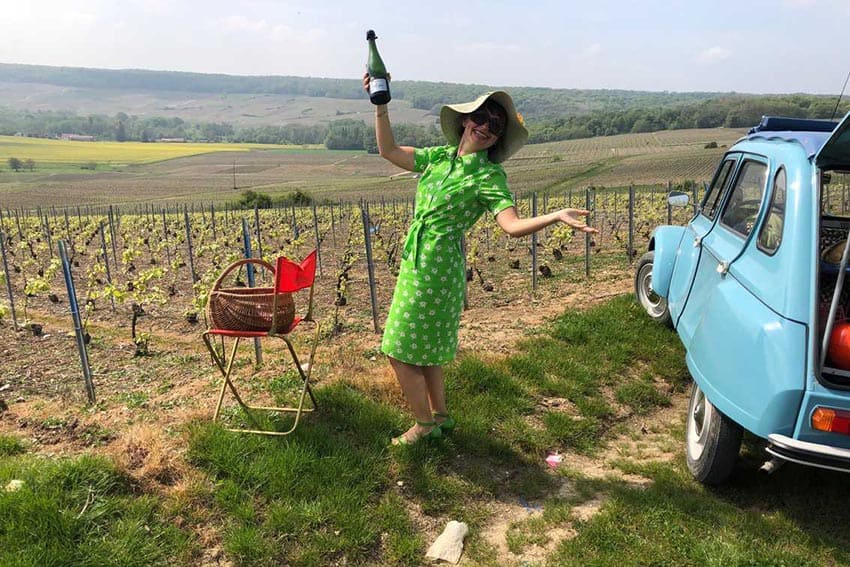



I have been there exactly! Part of the tradition is dressing your herd in flowers.
Each bauer is judged.